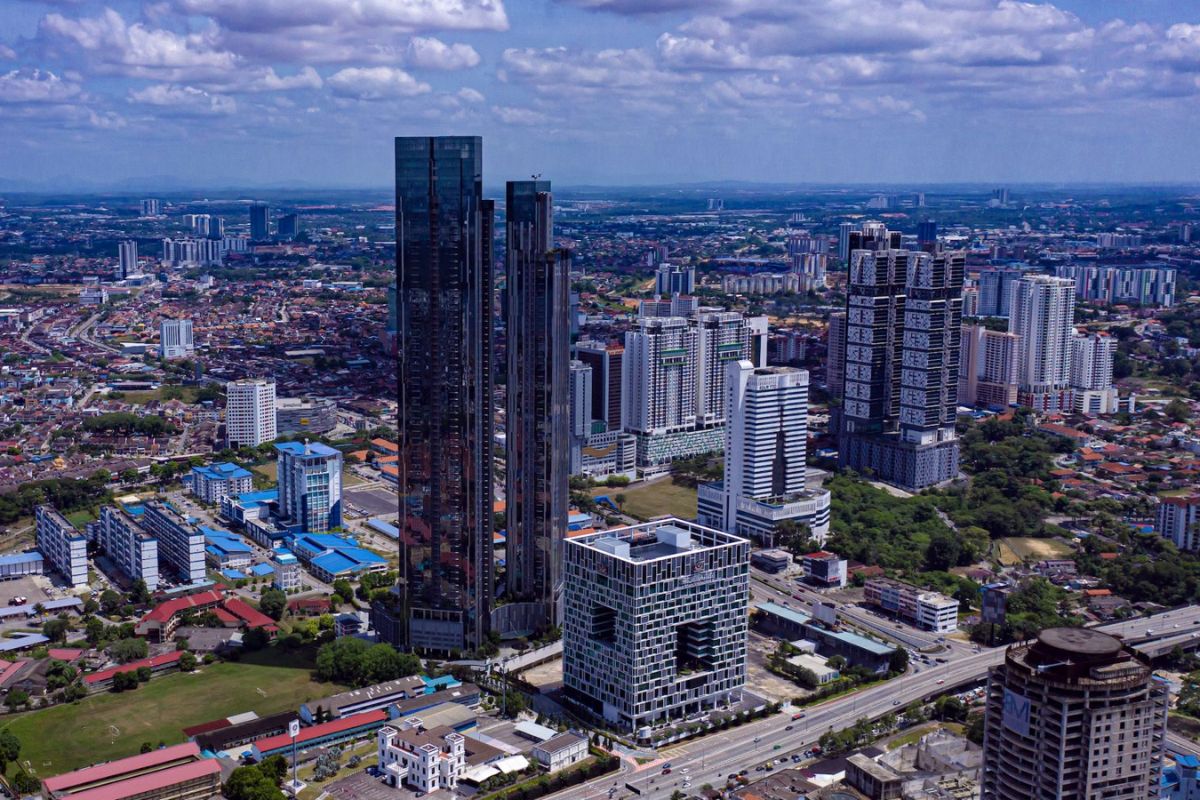Malaysia and Singapore: The recent pact between Malaysia and Singapore regarding the development of Special Economic Zones (SEZs) marks a significant milestone in the bilateral relations between the two countries.
This collaborative effort aims to harness the economic potential of the region, particularly in Johor, where Singapore’s presence has long been a driving force.
The establishment of SEZs not only underscores the economic significance of Singapore in Johor’s landscape but also represents a strategic move towards integrating the economies of both countries.
With the implementation of crucial infrastructure projects like the Light Rail Link, the connectivity between Malaysia and Singapore is set to improve, further enhancing the prospects for economic development.
This multifaceted collaboration holds the promise of creating an integrated economic landscape that will undoubtedly have far-reaching implications.
But what are the specific benefits and challenges associated with this pact? Let us explore further.
Key Takeaways
- Collaboration between Malaysia and Singapore on special economic zone development aims to boost economies and enhance competitiveness.
- The partnership focuses on attracting investments and facilitating the free movement of goods and people, with a particular emphasis on renewable energy and streamlined business processes.
- Singapore’s economic significance in Johor’s landscape as the second-largest foreign investor drives foreign direct investment in manufacturing, boosting the local economy and bringing expertise, technology, and innovation.
- The completion of the light rail link is a crucial infrastructure project that improves transportation, reduces traffic congestion, and enhances connectivity between Malaysia and Singapore, benefiting daily commuters, facilitating trade and investment opportunities, and promoting economic development.
Also Read: Euro Zone Faces Winter Chill: Data Hints at Easing Downturn Amid Global Economic Challenges
Malaysia and Singapore Collaborate on Special Economic Zone (SEZ)
The collaboration between Malaysia and Singapore on the development of a Special Economic Zone (SEZ) marks a significant milestone in the pursuit of economic growth and regional integration. This partnership showcases the commitment of both countries to boost their economies and enhance their competitiveness in the global market.
By joining forces, Malaysia and Singapore can leverage their respective strengths and resources to attract investments and facilitate the free movement of goods and people. The comprehensive pact focuses on key areas such as renewable energy and streamlining business processes, indicating a forward-thinking approach to sustainable development and efficient operations.
Malaysia’s Economy Minister recognizes the SEZ as an unprecedented opportunity for cross-border trade, which will not only drive economic growth but also foster closer ties between the two nations.
This collaboration sets a positive precedent for other countries in the region to explore similar partnerships that can contribute to the overall development and integration of Southeast Asia.
Economic Significance of Singapore in Johor’s Landscape:
Singapore’s economic influence in Johor’s landscape is of significant importance, driving foreign direct investment and fostering strategic partnerships.
The island nation has emerged as Johor’s second-largest foreign investor in the first half of 2022, contributing 70% of the state’s foreign direct investment in manufacturing.
This collaboration between Malaysia and Singapore is seen as a strategic move to solidify economic relations and reap mutual benefits in the economic landscape of both nations.
Singapore’s strong presence in Johor not only boosts the local economy but also brings in expertise, technology, and innovation, creating a conducive environment for business growth.
Furthermore, Singapore’s proximity to Johor provides a unique advantage for seamless trade and investment flows, making it an attractive destination for global companies looking to expand their operations in the region.
Light Rail Link: A Crucial Infrastructure Project:
How will the completion of the 4-km light rail link between Malaysia and Singapore impact transportation and alleviate traffic congestion in the region?
The completion of the light rail link is a crucial infrastructure project that holds great promise for improving transportation and reducing traffic congestion in the region. With one of the world’s busiest land crossings, the need for efficient and reliable transportation options is paramount.
The light rail link aims to address this issue by providing a convenient and sustainable mode of transportation for commuters traveling between Malaysia and Singapore. Once fully operational by the end of 2026, it is expected to ease the burden on existing road networks and offer a faster and more efficient alternative to private vehicles.
This project, despite facing delays and cost overruns, represents a significant step towards enhancing connectivity and promoting economic development in the region.
Connectivity and Economic Development:
With the completion of the 4-km light rail link, the focus now shifts to the significant impact it will have on enhancing connectivity and driving economic development between Malaysia and Singapore.
This infrastructure project holds immense importance as it targets daily commuters traveling to Singapore for work and education, providing them with a convenient and efficient mode of transportation.
By improving connectivity, the light rail link is expected to contribute significantly to the economic development of the region. It will facilitate the movement of goods, services, and people, fostering trade and investment opportunities between the two nations.
Moreover, this project opens up possibilities for increased collaboration and cooperation between Malaysia and Singapore in various sectors such as tourism, technology, and innovation.
Multifaceted Collaboration for Integrated Economic Landscape
The multifaceted collaboration between Malaysia and Singapore for an integrated economic landscape encompasses various sectors and aims to foster cross-border trade, investment, and people movement.
The joint development of the Special Economic Zone (SEZ) and the completion of the light rail link symbolize the commitment of both countries towards this endeavor.
The focus on renewable energy cooperation and streamlined business processes highlights the comprehensive nature of this collaboration.
By leveraging each other’s strengths and resources, Malaysia and Singapore stand to benefit from enhanced cross-border trade flows, increased investment opportunities, and improved mobility for people.
This multifaceted approach demonstrates a forward-thinking mindset that recognizes the importance of integration and cooperation in achieving sustainable economic growth and development.
Conclusion Of Malaysia and Singapore
The collaboration between Malaysia and Singapore in the development of the Special Economic Zone (SEZ) is of great economic significance.
The establishment of the SEZ will enhance connectivity and promote economic development in the Johor region.
The implementation of the Light Rail Link project will further facilitate transportation and trade between the two countries.
This multifaceted collaboration is crucial for the creation of an integrated economic landscape that will benefit both Malaysia and Singapore.
FAQs
Q1 What is the relationship between Singapore and Malaysia?
A The intricate history of Singapore and Malaysia’s bilateral ties has navigated a nuanced path, characterized by phases of both discord and collaboration. Within this historical framework, the relationship unfolds against a backdrop shaped by the interplay of political, economic, and cultural dynamics.
Q2 Is there bilateral trade between Singapore and Malaysia?
A In 2022, Singapore and Malaysia emerged as significant economic collaborators, ranking as each other’s second-largest trade partners. The bilateral trade between the two nations surged to an impressive $83.53 billion over the course of the year. Notably, Singapore played a pivotal role as one of Malaysia’s primary sources of foreign direct investment, contributing a substantial 8.3% to the total investments received in that period.




